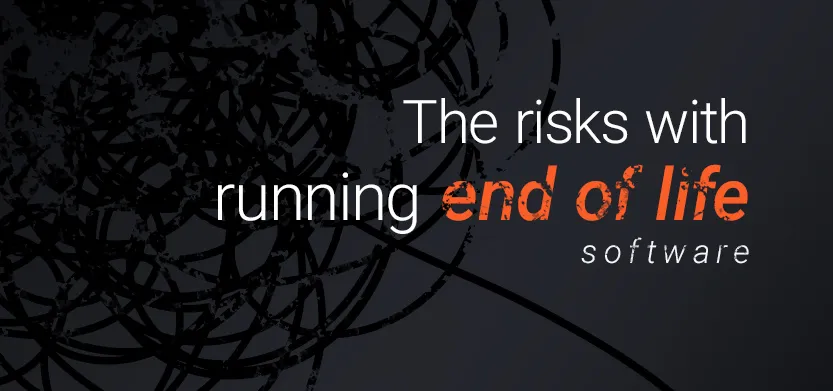

Posted in Software & Development
November 30, 2022
The Risks of Running End-of-Life Software
End-of-life (EOL) software is a very real problem. Most software these days is continuously evolving. Updates get issued constantly, or worse, vendors stop issuing updates for bugs and security fixes. No matter what system you use, you will reach a technological expiry date at some point. So, what are the risks?
What are the risks of running end-of-life software?

Listen to this post by using the player, or subscribe using Spotify, Apple Podcasts, or Google Podcasts.
Acro Commerce has developed a 6 step action plan for handling software end-of-life. View it here >>
When a system reaches end-of-life, the creator/owner of the software/technology no longer delivers support services for the product. That can include technical support, hardware or software upgrades, bug fixes, security patches, or feature development. In short, the system gets abandoned by its owner.
Software becoming obsolete can cause all sorts of problems. Here are a few of the risks to your business in running EOL software:
Compromised security
If you hold people's information and data, you are responsible and liable for it.
End-of-life technology receives no security updates. No bug fixes. No patches. No monitoring. Your technology is dead in the eyes of the creator. That means your security is completely compromised, not only for the platform that is EOL but also potentially for any others that connect to it.
At a minimum, your system can be accessed and your content or records edited, stolen, or deleted. If you have any user data, financial data, or sensitive information, you could have a major problem. The monetary and reputational costs could kill your business.
A survey of 2,600 CIOs across the U.S. found that the number one concern was keeping systems and information secure. By being proactive and not letting your systems reach their end of life, your company is better positioned to ensure that your data and your customer’s information remain secure.
Lack of reliability
If you were a taxi driver, would you willingly drive an old car that is no longer maintained and has sporadic issues? Of course not. That’s because your livelihood relies on the economics of your vehicle.
But that is what you are doing if you continue with EOL software. Old software is less reliable and more prone to failure.
Maintaining EOL software is complex and expensive, and integrations into other systems require even more time-consuming and expensive workarounds.
Regular updates, bug fixes and support, in general, go away at EOL, which makes system maintenance much more difficult. Instead of spending your resources on new tools or building better customer experiences, you are stuck paying top dollar for fixes and updates no longer covered by the software creator.
This brings us to our final point.
Higher operational costs
EOL software costs more, whether it’s through lost/stolen data, updating and maintaining with third parties, legal liabilities, or lost revenue from downtime or issues.
The sticker price on a new system can sometimes seem large and prohibitive from a business point of view. But, consider the consequences of a security breach or a major bug. The peace of mind that comes with having a fully secure and supported system that won’t arbitrarily go offline is worth its weight in gold.
Another benefit of moving away from EOL software is the opportunity to review your company's entire technology stack/architecture. If you have software moving towards EOL, it's essential to look at not only replacing the single system but also assessing your whole technology landscape for opportunities to make larger improvements.
Conclusion
Ultimately, EOL technology is costly to your business in multiple ways. Most technology providers give lots of notice when one of their products is going to be unsupported. That gives you time to assess your options and determine the path you should take.
To help you assess your options download our 6-step action plan for handling software end of life.
Editor’s note: This article was originally published on June 2, 2020, and has been updated for freshness, accuracy and comprehensiveness.

